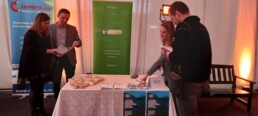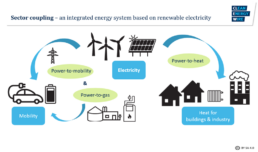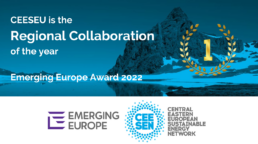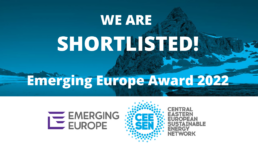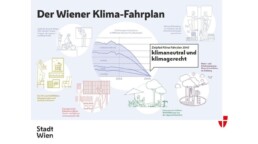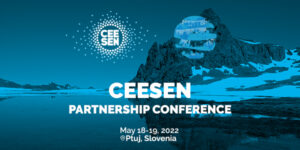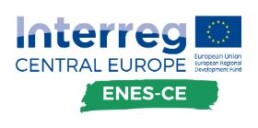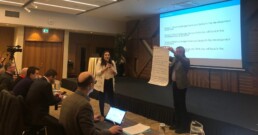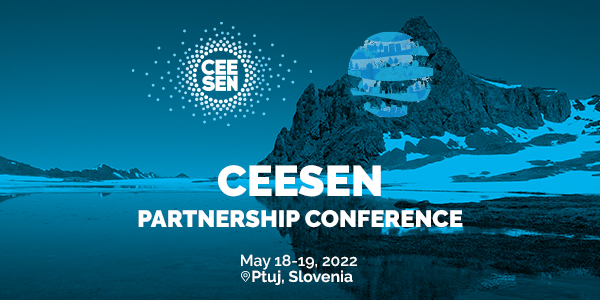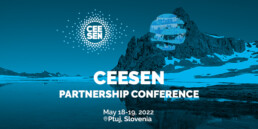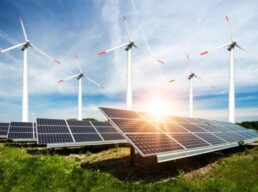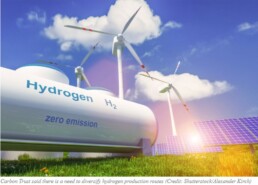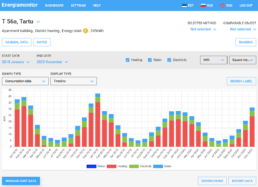The first interregional green hydrogen value chain in South Estonia and Northern Latvia
With a common goal and a strong partnership, work begins to establish the first interregional green hydrogen value chain in South Estonia, Tartu region, and Northern Latvia, Vidzeme region. Nine partners from Estonia, Latvia, and the Netherlands at the end of 2022 started work on the project “Supporting the Regional Development of the Green Hydrogen Fuel Value Chain for Transportation in Estonia and Latvia” (H2Value). As part of the Interregional Innovation Investments Instrument (I3) the H2Value project will be implemented for 3 years.
The transport sector is currently one of the top CO2 emission emitters, which requires existing technology to change to reduce the negative impacts on the environment. As there are solutions such as electrification or bio-CNG usage in the transport sector, there is a high need for other technologies. Green hydrogen is receiving growing attention in Europe and around the world as it has the potential to decrease greenhouse gas emissions and it can be used in multiple sectors including transport, industry, power and building sectors. Green hydrogen is produced by using renewable energy to power the electrolysis of water.

The H2Value project aims to have two pilots in Tartu and Vidzeme regions – setting up a small-scale green hydrogen production plant based on solar energy, establishing a green hydrogen refueling station, testing the transportation of green hydrogen via road and use hydrogen as a zero-emissions source of fuel. The challenge is the cost of this technology, which is currently high, and a lack of needed infrastructure. The price of green hydrogen plays an important role in setting up green hydrogen production and filling facilities for the transport sector.
In December 2022 at Tartu Nature House, Estonia, the project partners met in person to agree on the first steps to be taken to overcome the project challenges. During the first months’ project partners will devote all their attention to developing an interregional business and investment plan. The H2Value project will be implemented with the help of 2 regional authorities - Tartu City Government and Vidzeme Planning Region, 4 companies – Estiko Elekter, Waste management service ZAAO, AS ALEXELA and Baltic Innovation Agency, 2 associations - Estonian and Latvian Hydrogen Associations and 1 mentor from a top-performing region - New Energy Coalition in the Netherlands.
H2V alue under of Interregional Innovation Investments Instrument (I3) - Innovation investments Strand 2a (I3-2021-INV2a) has received funding from the European Union under grant agreement No. 101083881. I3 is a new instrument and it intends to support innovative value chain investments, to boost the economy through green technology and to create sustainable industry/transport. It also intends to provide support to interregional investments in sustainable food systems, sustainable agriculture, clean and efficient energy, sustainable industry, building and renovating, sustainable mobility, eliminating pollution and climate action. For more information visit: https://eismea.ec.europa.eu/programmes/interregional-innovation-investments-i3-instrument_en
alue under of Interregional Innovation Investments Instrument (I3) - Innovation investments Strand 2a (I3-2021-INV2a) has received funding from the European Union under grant agreement No. 101083881. I3 is a new instrument and it intends to support innovative value chain investments, to boost the economy through green technology and to create sustainable industry/transport. It also intends to provide support to interregional investments in sustainable food systems, sustainable agriculture, clean and efficient energy, sustainable industry, building and renovating, sustainable mobility, eliminating pollution and climate action. For more information visit: https://eismea.ec.europa.eu/programmes/interregional-innovation-investments-i3-instrument_en
Wood Fuel User Manual
The Wood Fuel User Manual seeks to provide a comprehensive overview of the entire wood-based energy value chain, from wood resources to various heating solutions, environmental requirements, and cost-effectiveness calculations. The book focuses on expanding the use of wood fuel as well as its residues-free and more efficient use – to make sure that there will be enough forest all of us!
Wood Fuel User Manual is intended primarily for local and corporate building management professionals who are exposed to the design, construction, and operation of heating solutions for buildings, groups of buildings, and small settlements in their daily work. The handbook could also be suitable for experts, consultants, and students in the fields of renewable energy, energy supply, and planning.
This book talks about wood fuels, introducing its main properties, quality classes and standards, storage and preparation for combustion, main combustion technologies and equipment and their impact on the environment. One of the topics is different heat supply methods, with an emphasis on cogeneration and hybrid heat supply. In last chapters of the book, an overview of planning, designing and calculation of economic profitability of heating systems is given.
The “Wood Fuels User Manual” has been printed and electronic file (pdf) can be found and downloaded – Wood Fuel User Manual (pdf).
The handbook was co-financed by the Baltic ForBio (Accelerating production of forest bioenergy in the Baltic Sea Region) project, funded by the INTERREG Baltic Sea Region Programme.

Book ISBNs and other languages:
English – „Wood Fuel User Manual“
ISBN 978-9916-9545-0-8
ISBN 978-9916-9545-1-5 (pdf)
PDF download: Wood Fuel User Manual (pdf)
Estonian – „Puitkütuste kasutaja käsiraamat“
ISBN 978-9916-4-0006-7
ISBN 978-9916-4-0011-1 (pdf)
PDF download: Puitkütuste kasutaja käsiraamat (pdf)
Lithuanian – „Susmulkintojo medienos kuro naudotojo vadovas“
ISBN 978-9955-887-39-3 (pdf)
PDF download: Susmulkintojo medienos kuro naudotojo vadovas (pdf)
Energy transition of companies and SMEs in Medjimurje County (CROATIA)
Accelerating the transition of Croatian companies and SMEs towards a sustainable growth model is one of the ambitious objectives of the local governments located in Medjimurje County (Croatia), as they face various barriers that deter energy efficiency and RES measures. Energy transition of business sector was one of the main topics of the largest regional event organized on 25th of November 2022 in Town of Prelog (Croatia) called „Economic Forum of the Town of Prelog 2022“.

Medjimurje Energy Agency Ltd. (CEESEU project partner) due to its long and good cooperation with Town of Prelog officials attended the event and used this opportunity to present the CEESEU project, its activities and expected results. Although the event was mainly intended for participants from business sector, it was attended also by national, regional and local policy makers who are supporting the whole process of energy transition of local companies and SMEs, provide relevant policies to foster their involvement and funding opportunities for launching energy efficiency and RES projects. Accordingly, this was a great opportunity to further connect with relevant national, regional and local policy makers on the topic of energy and climate planning at local level.
As part of the event, Medjimurje Energy Agency Ltd. arranged its own information desk and provided the opportunity for interested participants to get more information about the project and its results. In addition to that, the director of the Agency, Mr. Višnjić attended the panel interview “Energy security” together with several energy experts and gave his insights on the whole concept of energy transition and what efforts are needed from local and regional governments and local companies and SMEs to support the whole process in the long run.


Vidzeme Planning Region joins the EC mission "Adapting to climate change."
The Vidzeme planning region becomes the first participant from Latvia to join the European Commission's mission "Adapting to climate change" to promote the implementation of more active measures in the field of adapting to climate change. So far, 215 regions, municipalities, and local organizations from 24 European Union member states have joined the "Adaptation to Climate Change" mission.
 Planning regions and municipalities play an essential role in the country's progress toward climate neutrality and climate resilience.
Planning regions and municipalities play an essential role in the country's progress toward climate neutrality and climate resilience.

Benefits of joining the mission:
- Research & innovation funding opportunities to join large innovation actions;
- Support through community of practice on adaptation to climate change;
- Methodological recommendations and guidelines, which will be available to the mission participants from the beginning of 2023 on the specially developed platform;
- Help by acting as testbeds for innovative adaptation solutions
- Networking opportunities, learning and exchange of experiences among regions,local authorities and communities
- Support with involving citizens in decision-making
- Participation in the annual Mission Forum
- Visibility for participating regions and local authorities
Analysis of past climate conditions and future climate change scenarios clearly demonstrates that climate change trends will continue throughout this century. In addition, the most significant changes will affect the extreme values of the climatic parameters - in the future, we will have to deal more and more often with extreme weather conditions that are not typical for the territory of Latvia.
The most significant risks identified in Latvia are seasonal, incl. changes in the growing season, fires, proliferation of pests and pathogens, tree diseases, the introduction of new species, the spread of respiratory diseases, heatstroke, precipitation-induced flooding, wind gusts, power outages, hydropower fluctuations, frost reduction, bare frost, infrastructure damage, equipment overheating, water decrease in runoff during the summer season due to longer dry spells. It is necessary to implement adaptation measures following the risks, which are oriented towards mitigating and preventing the impact of these risks.
The benchmarking tool for monitoring, analysing and reducing energy consumption in buildings
The benchmarking tool “Energiamonitor“is an application for monitoring, analysing and reducing energy consumption in buildings. With the tool, you can easily discover recommendations and tips for reducing energy consumption and saving money by entering just electricity, heating and water heating data of your own building or apartment. In addition to monitoring energy consumption with vivid graphs, the application offers the ability to calculate the current energy label of your building (based on Estonian regulations), compare or share the energy consumption of your object(s) with others, and use an in-built solution to seek advice from energy experts up to reaching complete renovation solution in cooperation with energy experts.
The application supports English, Estonian and Russian, so international users can visit the site and try with their own building(s) energy consumption. If you do not have your own data immediately available, you can check the application with demo buildings integrated into the system.
If you don't know where you are, you don't know where to go and what you can achieve.
Use Energiamonitor and find out!
Energiamonitor application was developed with Baltic Smart City Areas for the 21st Century (AREA 21) project under the Interreg Baltic Sea Region Programme. You can also check the AREA 21 guide on Energy Planning and Management Tools

Polish electric buses the most exported in EU
The overall trend for electromobility has become more and more important due to the environmental awareness, energy transfer towards Renewable Energy Sources (RES) and multiple subsidies programs. According to Bloomberg NEF in 2025 the worldwide share of electric buses will reach 47%.
In 2021, Poland was first in European Union in producing and exporting electric buses. Right after was Belgium (with 36% shares) and far, far after Czech Republic (7%), Germany (4%) and the Netherlands (2%). It took Poland only 4 years to grow from 10% to 46% of the European electric buses market. This rapid expansion is caused by the fact that during 2020 and the worldwide pandemic the conventional car sales market was decreasing and at the same time electromobility market was significantly growing, with electric buses sales as well.
According to the Polish Department of Electromobility Development (pol. Polska Izba Rozwoju Elektromobilności) in 2022, 707 electric buses have been riding through the Polish streets. With Warsaw and its 162 electric buses, Cracow (78) and Poznan (59) heading in this race from all of the Polish cities. What is more, this organization predicts that the number of electric buses will reach 1350 till 2024.
There are three Polish electric buses producers that are stepping up to the mark of such a challenge. These producers are: Solaris Urbino Electric in Bolechowo - which is the biggest one, Volvo 7900 Electric in Wrocław and MAN Lion’s City E in Starachowice. Not less important matter are – electric buses charging stations. In Poland, there are currently 520 charging stations with over 70 MW of power located in 50 cities
Next step for electromobility market is an energy source diversification which adds to the mix hydrogen energy. Solaris has already got multiple orders for buses fueled with H2. Unfortunately, for this moment there is no an open-access hydrogen station in Poland, only the private ones. Quite recently Polish oil refiner and petrol retailer PKN Orlen has opened their first mobile hydrogen station in Poland in Cracow. The newly opened mobile station is only dedicated for the Cracow public transport buses and carries 400 kg of H2 which power 11 vehicles.
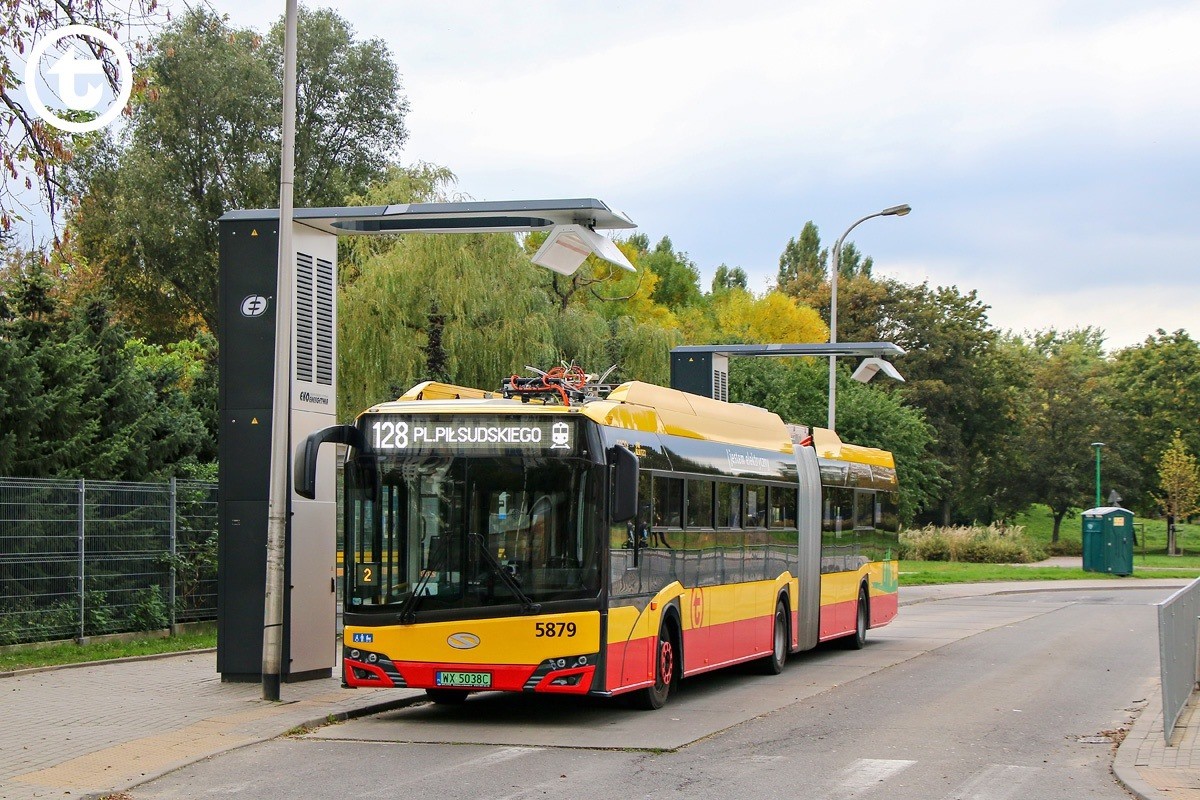
What is sector coupling and what are its benefits?
Sector coupling is increasingly being used as a buzz word, which promises to decarbonise our economies and help the European Union meet its international climate targets. At the same time, it is deemed to have the potential of ensuring our energy security while also making it possible to keep energy prices stable.[1] Given the geopolitical instability Europe is facing at the moment, interest in renewable energy sources and new energy system approaches such as sector coupling are quickly growing in popularity.
But what is sector coupling? There is still some ambiguity regarding the term with both narrow and holistic definitions of the concept being applied.[2] While there is some diversity across the spectrum, the distinction generally lies between sector coupling being viewed as end-use or as cross-vector integration. This difference has a substantial impact on the technologies needed for sector coupling to be achieved and also on the extent of change to be undertaken on the energy system.
End-use sector coupling involves the electrification of energy demand while reinforcing the interaction between electricity supply and end-use. An example of this would be using electricity generated from renewable energy sources (such as solar power) to run electric vehicles. In addition to reducing CO2 emissions, this approach has the added benefit that electric devices also tend to be more efficient than fossil fuel-based alternatives. At the same time, one of the biggest hurdles of the past – namely the high cost of generating electricity from renewable sources – is also largely being overcome due to immense price hikes for conventional electricity sources.
Cross-vector coupling refers to the integrated use of different energy infrastructures and vectors, in particular electricity, heat and gas.[3] This can either be done on the supply side, e.g., through conversion of (surplus) electricity to hydrogen, or at the demand side, by using residual heat from power generation or industrial processes for district heating for instance. Cross- vector is likely to provide the energy system with increased flexibility to cope with fluctuations in energy demand and renewable energy supply. At the same time, it is also associated with costly investments and requires a fundamental change to our energy system.
While sector coupling has the potential of revolutionising our economies, it still has to overcome one major challenge: renewable sources such as wind and solar energy are rather unpredictable and renewable energy is not always available when needed. How can one rely on solar panels to charge one’s car on a rainy winter day? The answer to this question lies in the use of storage solutions. By using batteries or other storage methods, renewable energy sources can be integrated into our energy systems and ensure steady consumption throughout the year. Energy storage is therefore a key puzzle piece in the larger sector coupling puzzle. This topic will be explored in August’s blog on storage solutions.
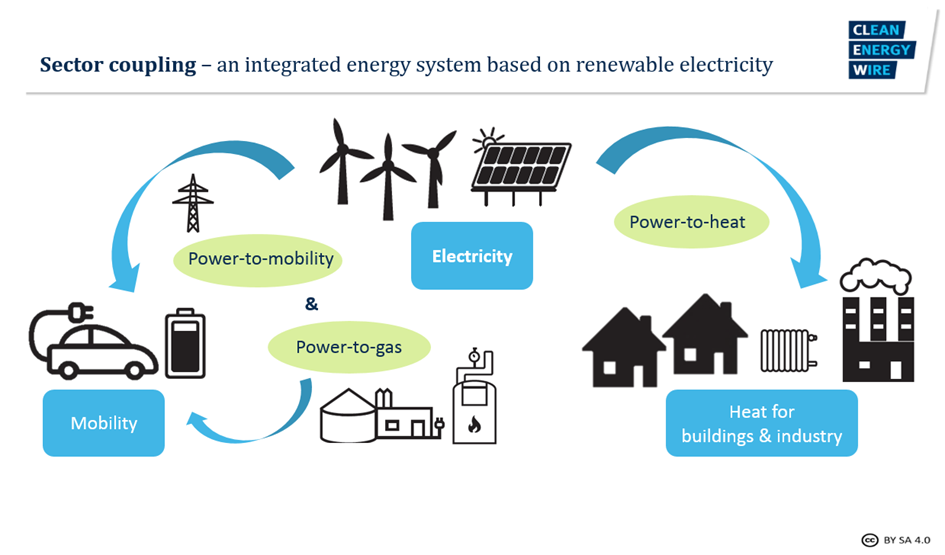
[1] Sector coupling: how can it be enhanced in the EU to foster grid stability and decarbonise? (europa.eu)
[2] The sector coupling concept: A critical review (tuwien.ac.at)
[3] Sector coupling: how can it be enhanced in the EU to foster grid stability and decarbonise? (europa.eu)
CEESEU is the Regional Collaboration of the year!
We are happy to announce that the project CEESEU won the Regional Collaboration of the year as part of the Emerging Europe Awards 2022 in the category of Partnership.
Emerging Europe is a growth hub whose mission is to foster sustainable development in the emerging Europe region and initiate debate about its future. Through their expertise, global reach, strong local footprint, and vast network, Emerging Europe is a trusted partner for organisations from or with a stake in the emerging Europe region. Headquartered in London, with a team spread across emerging Europe, their aim is to connect the region and the world — raising awareness of the region’s investment, trade, cultural and tourism potential and bringing together a global, like-minded community.
The Emerging Europe Awards showcase the best of emerging Europe and has awarded dozens of unique initiatives, organisations and individuals, including global leaders who have contributed to the region’s success.
CEESEU was nominated and shortlisted among the top three in the Regional Collaboration Initiative of the Year category. The final decision was made by the 2022 jury panel and the winners was announced at the Future of Emerging Europe Summit & Awards on June 23, in Brussels.
The Regional Collaboration category is open to organisations operating in emerging Europe which implemented successful projects and initiatives aiming at creating a shared agenda on a local, national, regional and global level, sharing knowledge, experience and best practice, smart city development and encouraging collaboration with international organisations and with other parts of the world.
Find the full list of winners here.
CEESEU shortlisted for Emerging Europe Awards
We are happy to announce that the project CENTRAL AND EASTERN EUROPEAN SUSTAINABLE ENERGY UNION has been shortlisted for the Award: Regional Collaboration Initiative of the Year as part of the Emerging Europe Awards and its 2022 edition.
Emerging Europe is a growth hub whose mission is to foster sustainable development in the emerging Europe region and initiate debate about its future.
Through their expertise, global reach, strong local footprint, and vast network, Emerging Europe is a trusted partner for organisations from or with a stake in the emerging Europe region.
Headquartered in London, with a team spread across emerging Europe, their aim is to connect the region and the world — raising awareness of the region's investment, trade, cultural and tourism potential and bringing together a global, like-minded community.
The Emerging Europe Awards showcase the best of emerging Europe and has awarded dozens of unique initiatives, organisations and individuals, including global leaders who have contributed to the region’s success.
CEESEU was nominated and shortlisted among the top three in the Regional Collaboration Initiative of the Year category. The final decision will be made by the 2022 jury panel and the winners will be announced at the Future of Emerging Europe Summit & Awards on June 23, in Brussels.
Find the full list of shortlisted candidates here.
€100m available for the LIFE Clean Energy Transition Call 2022
The LIFE Clean Energy Transition (CET) Calls for proposals 2022 has been recently published – and has nearly EUR 100 million available for funding project ideas to:
- build the policy framework for the Clean Energy Transition at local, regional and national level,
- accelerate the market for the Clean Energy Transition with the roll-out of technology, digitalisation, new services and business models and enhancing related professional skills,
- attract private finance for sustainable energy investments and support the development of local and regional clean energy investment projects, and
- involve and empower citizens in the Clean Energy Transition.
Projects are supported with a 95% co-funding rate.
Find out more about all 18 CET topics and see how you and your organisation can help accelerate the Clean Energy Transition! Most of them are directly linked to the topics addressed by the SEIF events. Info session recordings are available for each topic.
Additional guidance such as on how to write an excellent proposal is published on our LIFE Calls for Proposals 2022 page .
The deadline to submit your proposal is 16 November 2022, 17:00 Brussels time.
Polish development for Lithium-ion batteries
Energy storage plays a huge role in decarbonization and ensuring energy security action plan. The first thing that comes to one’s mind when considering energy storage are batteries. However, this way of energy preservation has still a lot of problems e.g.: decrease in battery life time due to charging process, high temperature work environment (especially in smartphones), resources scarcity and obtaining raw materials for production.
Scientists from the Faculty of Chemistry of the Warsaw University of Technology in Poland have developed an innovation - a new electrolyte called LiTDI salt which significantly upgrades and extends the life of lithium-ion batteries. LiTDI salt is produced under the license of the Warsaw University of Technology by the French chemical concern Arkema. The new electrolyte characterizes with lower toxicity, which indicates a cell’s life elongation by 3 times in comparison to other batteries of this type, and higher resistance for the external factors. For example, their batteries can work in 90 °C. All of the mentioned above can significantly improve the lithium-ion batteries production process and their usage phase.
The improvement that can be achieved within the production phase: thanks to the low toxicity the strict production requirements for the factory could be slacked which might indicate lower production costs along with the batteries’ market costs. The improvement that can be obtained within the usage phase: the battery can be used longer and there is no need for frequent replacement for a new one. If the electric vehicle is considered, in which the accumulator is one of the most expensive component, the feature mentioned before might relevantly influence the price of such a vehicle as well. What is more, extra cooling system is not as necessary due to the high temperature resistance characteristic.
Polish invention has been already used in smartphones and electric vehicles. In addition, lithium-ion batteries can be used in many electronic devices e.g., wireless headphones, handheld power tools, toys, small and large appliances and electrical energy storage systems.
Picture: https://www.powertechsystems.eu/wp-content/uploads/sites/6/2019/11/Cylindrical-Battery-cells-400x267.jpg
Learning about the benefits of city storage and sector coupling: the CSSC Lab project
The CEESEN partnership conference in Ptuj (Slovenia) in May 2022 offered the opportunity of sharing experiences and examples from other projects related to sustainable energy use. The CSSC Lab project, which is co-financed by INTERREG-DANUBE and has a total budget of just over 2 million EUR was presented on this occasion with a particular focus falling on its demo centres.
The project’s main aim is to test and promote city storage and sector coupling solutions in the Danube region. Its main target group are small and medium-sized municipalities since these harbour vast potential in terms of the role they can play in the energy transition. This potential is currently not being seized since municipal staff frequently lacks the necessary know-how needed to implement technical energy projects.
While the definition of sector coupling varies, the definition used in the context of the project relates to the transfer of energy generated through renewable energy sources to other sectors. Storage technologies such as batteries are then used to ensure the energy is available at a later point in time when it is needed and not when it is generated. These approaches can be applied in a wide range of contexts and can help increase the usage of renewable energy sources.
There are a total of four demo centres in the project (Slovenia, Austria, Bulgaria, Croatia), all of which test different sector coupling approaches and are running in varying contexts (very small communes to medium-sized cities). During the conference session, the speakers focused on the Austrian and the Slovenian cases, both of which are situated in rural communities.
The Austrian demo centre was launched in June 2021 as part of the solar.one building in Stegersbach, Burgenland. The demo centre is part of a larger competence centre for renewable energy, which uses a range of different sector coupling and city storage technologies.
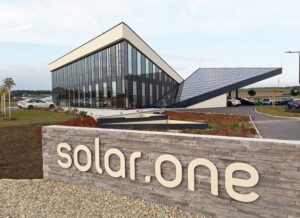
The technologies being tested in the centre include:
- Li-Ion and saltwater batteries for storing electricity
- Thermal heat storages for storing heat
- A heat exchanger system with concrete core activation for heating and cooling the building
- Equipment for mobile storage for charging electric vehicles
The Slovenian demo centre opened in Desternik, Slovenia in July 2021. The demo centre is based at a municipal building and includes technologies which test:
- The generation of electricity through photovoltaics
- The storage of electricity in a battery
- The charging of electric vehicles
Both centres provide the local community with access to an e-vehicle charging station running purely on solar energy. In the case of the Austrian demo centre, heat is also captured and used for heating and cooling the building. In both cases, batteries are used to store the energy to ensure it can be employed when it is needed. The centres clearly show that rural communities can play an active role in advancing the green transition in Europe!
More information can be found here: https://www.cssclab.eu/
Vienna’s strategy for climate neutrality
The city of Vienna recently published Smart KLIMA City Wien, which outlines how it will achieve climate neutrality in the next 20 years. It is an updated version of the previous Smart City concept but has been tailored to reflect the climate goals combined with social policy aspects. This step is important for Vienna to ensure that it can continue being a highly livable city in the future.
The city has the lowest CO2 emissions per capital in Austria and has already taken serious steps to change the climate performance of the city: In fact, compared to 1990 C02 levels, a drop of 40% has already been recorded[1]. Nevertheless, the new Vienna Climate Roadmap contains over 100 measures, which are based on seven broad values:
- Be inclusive: climate-friendly policies that take social justice into account;
- Viennese success stories: Vienna uses the initial advantage through excellent infrastructure, a functioning administration and a high level of social cohesion;
- Use market opportunities: strengthen the regional economy with sustainable innovations;
- More Green Jobs: create impactful new profession(s);
- Actively involving citizens: shaping the future together;
- Viennese climate modernity: integrating science, art and culture;
- Doing our own homework: finding good examples.
All measures fall into one or several target areas and cover topics such as: energy (photovoltaic offensive, district heating, district cooling); mobility (expansion of public transport, development and of e-ride sharing offers, city of short distances, hydrogen drive) and buildings (subsidies, simplifications for photovoltaic systems, sustainable construction) just to name a few.
If you are interested in finding out more, join us at our CEESEN conference in Ptuj. The city of Vienna will be giving a presentation on its plan on 18/05/2022. You can register for the conference here: https://ceesen.org/en/conference/
[1] https://smartcitiesconnect.org/vienna-publishes-latest-climate-strategy-plans-to-achieve-carbon-neutrality-in-20-years/
Want to know more?
Join our conference online or on the spot in 18-19 May @Ptuj, Slovenia or Online
Fuel of the poor - household biomass use in Bulgaria, Hungary and Romania
In Central Eastern Europe the poorest rural households often face energy poverty, which means that they cannot adequately heat their homes, or can only do so by spending disproportionate amounts of their income on heating. They typically heat with wood, as often they have no access to gas and district heating networks. They live in houses that are in bad condition with very poor heat insulation and without the means to buy more efficient and more expensive heating equipment. Therefore a poor family needs considerably more wood to heat their home than a better-off family would in a same sized house, while they also face rapidly increasing prices of firewood.
Energy production from biomass is the most important source of renewable energy in most of Central Easter Europe as well as of fine particle emissions (PM10 and PM2). While wood as an energy source is considered almost CO2 neutral due to the carbon stored by the trees, considerable CO2 emissions are released at the time of consumption which adds to GHGs in the atmosphere.
The energy transition in the EU foresees a high technology future including smart infrastructure and advanced renewable energy systems. However these assume a certain degree of financial and material status which is far from the realities of CEE households relying on solid fuels. Therefore it is important to specifically include solid fuel user households among the beneficiaries of energy transition by supporting them in upgrading their heating methods.
At the CEESEN conference in May, Anna Bajomi energy poverty expert at Habitat for Humanity will talk about these topics as she presents the results of the study “Fuel of the poor - household biomass is Bulgaria, Hungary and Romania”, written in the frames of the LIFE- BiO-BALANCE project.
SPEAKER INFORMATION
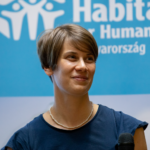
Anna Zsófia Bajomi is an energy poverty expert at Habitat for Humanity Hungary (HfHHU) with a background in social policy and urban planning, working on energy transition, energy poverty and solid fuel user households. She is also a PhD candidate at the Polytechnic University of Milan.
Habitat for Humanity works in 70 countries around the world, HfHHU was established as an independent branch in 1996. HfHHU's mission is to see everyone live in decent, affordable and safe housing. We deliver pilot projects and provide renovation schemes and social services to people in vulnerable housing situations, and amplify our impact through advocacy and research activities, focusing on energy poverty among others.
Want to know more?
Join our conference online or on the spot in 18-19 May @Ptuj, Slovenia
Polish municipalities finalized the first steps towards SECAP development
After the successful data collection process, the database created during CEESEU project was carefully analyzed in order to establish Baseline Emission Inventory (BEI) and Risk and Vulnerability Assessment (RVA) for each municipality that will implement the Sustainable Emission and Climate Action Plans on behalf of Mazovia Energy Agency:
- Municipality of Stara Kornica,
- Municipality of Korczew,
- Municipality of Kotuń,
- Municipality of Jabłonna Lacka.
Baseline Emission Inventory that was created for those four areas in Poland took into account final energy consumption, energy supply and CO2 emissions. Those calculations were made based on wide range of data considering buildings, equipment, facilities, industries, transport and agriculture, forestry and fisheries sector with distinction of fossil fuel and renewable energy sources. Inventory of CO2 emissions took into consideration also emissions that came from the non-energy related sources, for example waste management and waste water management.
The energy supply for each municipality has been verified. Data presented in BEI and RVA contains also information if the green electricity was purchased, if the local or distributed electricity production came from the renewable sources and what was the general electricity and heat/cold production.
The highest total emission has been calculated for the municipality of Kotuń with 8 490 citizens. The lowest total emission has been calculated for the municipality Stara Kornica with 4 694 citizens.
Risk and Vulnerability Assessment is an extensive analysis of the climate hazards risks, which due to the recent climate changes have become more likely to take place in the area e.g. extreme heat, draughts and forest fires. Common vulnerabilities amongst the municipalities analyzed in the process cover also the subject matter of the socio-economic indicators e.g., the perspective of decreasing number of citizens.
Significant decrease in emissions produced in the area of considered municipalities is the goal of implementing SECAPs – Korczew, Kotuń, Jabłonna-Lacka will reduce emissions by 40% and Stara Kornica by 55% up to 2030. BEI and RVA conducted by Mazovia Energy Agency specialists are planned to make an impact on the future of involved municipalities.
Want to know more?
Join our conference online or on the spot in 18-19 May @Ptuj, Slovenia
The importance of citizens involvement in local energy planning and implementing concrete energy community investments
Experience of Croatian partners within the ENES-CE project
Many Central European countries need support in the development of local and regional energy strategies and action plans, since they are lagging in their implementation and thereby threatening regional competitiveness. In addition, local authorities face many challenges in implementing their plans including lack of financing, being understaffed and lack of local acceptance. This undermines the pledge that CoM signatories made to support the recent EU action in reducing GHG emissions by 55% until 2030.
Creating a functional low carbon economy plans (like SEAP/SECAP) requires tapping into the human and financial potential of citizens. This challenge is addressed by the project ENES-CE – Collaboration between public bodies and citizen energy groups in implementing local energy strategies in Central Europe through improving the adoption and quality of energy plans with a bottom-up quadruple helix approach, where citizens play a pivotal role. Having this in mind, the main goal of the project is to stimulate citizen engagement in creating local energy strategies in different Central European regions and beyond.
The implementation of the project leads to sustainable regional development while the efficacy of all project interventions is directly linked to the development of energy cooperatives and other forms of citizen energy groups as a way for involving citizens in local energy planning and implementing concrete energy community investments. The aim of the citizen participation is to help the public bodies implement their strategies in a more efficient and bottom-up approach. In doing so, the project partners from Croatia, Hungary, Poland, Slovenia, Germany and Italy from the beginning of the project in 2019 managed to increase the acceptance of low carbon investments and ease the achievement of existing SEAPs/SECAPs and other local low carbon development strategies and energy plan actions in their targeted regions. This resulted in increased activities in energy sector, combined with growing awareness of interrelations between economic and environmental issues for a broadening of energy research in order to address three pillars of sustainability: the social, economic, and environmental.

As a part of ENES-CE project activities in Croatia, it is worth to highlight the engagement of included Croatian partners Medjimurje Energy Agency Ltd. and Town Prelog who managed to motivate citizens on the local level to participate in energy planning and implementation of planned energy investments in their community.
Through establishment of this acceptance atmosphere, they trigger the cooperation by enhancing communication activities from local and regional authorities towards their citizens through workshops, educations, printed material distribution, online marketing activities and other. This resulted in organization of several workshops from year 2019 until the finalization of creation of citizen energy association “Green Energy Club Prelog” in year 2021. The association is open for anyone to join and its main goals are sustainable development, development and implementation of energy and climate projects, environmental protection and cooperation with other similar organization to satisfy its main goal. Town Prelog as well as Medjimurje Energy Agency Ltd. have been supporting the establishment of the association from the beginning and will do so through the course of its actions in the future.
The organized workshops combined with other relevant communication activities have triggered involvement of interested citizens in process of revision of existing energy plan from 2014 (SEAP), development of new energy plan (SECAP) and identification of most relevant measures to be implemented in cooperation with local authorities and/or SMEs in Town Prelog. In the end, three most relevant measures for implementation have been identified: installation of photovoltaic (PV) powerplants on public buildings; workshops for local entrepreneurs on financing energy related projects and bike sharing project and construction of bike lanes. On the citizen’s and newly established energy association initiative it has been determined that within ENES-CE project as a pilot investment a PV powerplant will be installed on the roof of Kindergarten “Fijolica” located in Town Prelog.

Base on the feedbacks from involved stakeholders it was agreed that the new PV powerplant will have the power of 50 kW. Total cost of the investment has been estimated at around 49.000,00 €. Since the cost of this investment exceeds the allocated budget for implementing pilot activities within the ENES-CE project (15.000,00 €), the plan is that the rest of the funds will be partially covered from the budget of Town Prelog and co-financed by funds available through Croatian national fund called Environmental Protection and Energy Efficiency Fund. The contractor for the construction of the PV powerplant is already selected so the construction works are being carried out according to plan and the PV powerplant is expected to be launched in the middle of this year. In the final word can be said that the Town administration is very proud of this initiative since the planned investment will provide better service to children and their parents and improve the working conditions of employees in concerned institution.
As the case is in Croatia, all project results are expected to have a significant impact in other included CE regions especially in increased citizen participation in local energy planning and developing local energy action plans in more bottom-up way and providing the momentum for further investments in the local energy infrastructure depending on real local needs. In addition, the pilot actions within the project can serve as testing ground for cooperation of citizens and public authorities in other CE regions beyond the project.
Want to know more?
Join our conference online or on the spot in 18-19 May @Ptuj, Slovenia
SPEAKER INFORMATION

Niki Radiković (MSc in mechanical engineering) graduated in 2019 from Faculty of Mechanical Engineering and Naval Architecture, University of Zagreb (Croatia) and currently works as energy expert associate at Medjimurje Energy Agency Ltd. where he gained extensive experience in technical coordination of energy projects co-financed by various national and EU funds. He showed exceptional skills and knowledge in implementing community energy projects, developing relevant local and regional energy and climate planning documents including Sustainable Energy and Climate Action Plans, as well as in communicating with relevant stakeholders and their involvement in overall energy and climate planning process at regional and local level.

Katarina Drk Hutinec (MSc in economics) graduated in 2018 from Polytechnic of Međimurje in Čakovec (Croatia) and currently works as project manager at Medjimurje Energy Agency Ltd. and is known for her active involvement. She spent her rich career mainly in social sector working on community relevant projects and directly interacting with citizens especially those who are vulnerable and socially excluded. During her working time at Medjimurje Energy Agency Ltd. she gained extensive experience in administration and finances of projects linked to energy and climate and in the development, application and reporting of the same. She has also participated in activities related to implementation of various projects oriented towards energy poverty, enhancing energy efficiency in households and fostering the use of renewable energy sources.
Is the grass always greener in other cities? How integrated urban planning can help your municipality to become more sustainable
Municipalities should lead the way towards energy transition for various reasons. First of all, because they are the closest to the citizens and many existing problems can be solved only locally, in close cooperation with local stakeholders. Second of all, because they have tools and capacities to take action:
- as energy consumers they can reduce energy consumption in their own facilities and with respect to the services that they offer to the citizens (e.g. public lighting, public transportation);
- as energy providers they can ensure that the energy supplied to the local consumers is secure, affordable and comes from environmentally friendly sources;
- as local regulators they can implement laws and regulations that would encourage more energy efficient decisions in construction, spatial planning etc., as well as more frequent use of environmentally friendly means of transport;
- as motivators they can encourage citizens and local stakeholders to involve in sustainable energy projects and initiatives and act in a more energy conscious way;
- as actors of the policy making process, they can influence EU and national-level policies sharing their expectations and ambitions with the decision makers.
Single actions taken in all those areas are no longer a solution, though. The energy transition is a complicated process and calls for integrated solutions that would combine elements of sustainable transport, energy and land-use planning. They will help not only to make our cities more climate friendly but also to create more liveable areas satisfying citizens’ various needs.
At our CEESEN Partnership Conference in May, Zsófia Pej, climate programme leader at the Hungarian think-tank Energiaklub Climate Policy Institute will talk exactly about this topic. She gained a lot of experience while contributing to the EU funded MULTIPLY project and she is going to present valuable good practices and supporting tools are now available and to be presented besides in-side experiences.
6*7 local municipalities have participated in the project and went through an interesting peer-to-peer learning process to design their own energy plans in line with the Covenant of Mayors initiative to mitigate at least 40% CO2 emission by 2030.
More information: http://www.citiesmultiply.eu/en/
Want to know more?
Join our conference online or on the spot in 18-19 May @Ptuj, Slovenia
SPEAKER INFORMATION

Zsófia Pej is an experienced project leaderwith a demonstrated history of working in climate adaptation at local level and energy efficiency in the public sector.
Energiaklub is a Hungarian NGO, policy and applied science center that concentrates on energy efficiency, renewable resources, climate protection, conventional energy resources and energy policy.
University of Tartu hosts CEESEU’s second bootcamp on SECAPs
From March 8th to 10th 2022, CEESEU held its second bootcamp in Tartu, Estonia. The three-day training was attended by 42 project partners and municipal representatives from Germany, Slovenia, the Czech Republic, Croatia, Estonia, Latvia, Romania, Hungary, Poland and Austria.
Since some municipalities in Central and Eastern Europe struggle to prepare and implement Sustainable Energy and Climate Action Plans (SECAP), this bootcamp concentrated on a variety of important topics, namely SECAP implementation, data collection, technological solutions for SECAP implementation, available SECAP financing in the region, and tips for writing successful proposals. The three-day programme aimed at transmitting the necessary knowledge to successfully develop and implement SECAPs in municipalities in Central and Eastern Europe.
The bootcamp opened with an icebreaker session, a precursor to ConPlusUltra providing a presentation on SECAP implementation outlining the content of a SECAP, the elaboration process including stakeholder involvement, and the subsequent implementation. ConPlusUltra then explained how targets can be set and what guiding principles should be applied during the monitoring process. Finally, the Urban Adaptation Support Tool was presented, as well as its accompanying Excel template.
After that, a group exercise was held for which the participants were split into four groups and asked to discuss one of two questions: “What challenges have you faced in the development of SECAPs?” and “What challenges do you think you will face in the implementation of SECAPs?” The group exercise revealed that the countries in the region face numerous barriers related to both the development and implementation of SECAPs. These include a lack of data, difficulty understanding citizens’ needs, and insufficient political commitment.
In the afternoon of Day 1, climate change mitigation and adaptation actions at a local level were presented by Climate Alliance. The presentation focused on the Covenant of Mayors Good Practices database, which hosts all the actions of the Covenant Signatories. After that, Climate Alliance held another session on reporting methods, explaining how to enter information in the various sections of MyCovenant.
On the second day, the bootcamp was opened with a presentation on Tartu’s energy transition by a municipal energy representative, who came to speak to the participants and explain the various actions the city is taking to meet its climate targets. Following this, the participants took part in a guided tour around Tartu, finding out about the SmartEnCity project, which allowed for the refurbishment of old city housing among other measures.
In the afternoon, Climate Alliance led a session on energy performance and environmental data collection, addressing related problems and previewing the new pillar on energy poverty, with a focus on the strategic role of the CoM Territorial Coordinators.
The last session of the day, presented by MENEA, outlined technological solutions, which should make it possible to decrease energy consumption and reduce GHG emissions. While soft measures such as awareness raising are important, changes in infrastructure can have a big impact on energy consumption and thus such possible measures were outlined.
On the third day, the morning began with ENVIROS presenting a portfolio of financing options for SECAPs across the region, based on research previously conducted in the project on the different funding sources in the partner countries. Since finance is often a major barrier for SECAP implementation, this session was especially appreciated by the municipal representatives.
This was followed by a presentation by ConPlusUltra outlining several innovative financing options for SECAPs. These include traditional bank loans, alternative financing schemes such as Crowd Investing, Crowdfunding and Energy Performance Contracting. These instruments, while not widely used in Central and Eastern Europe, can be employed to mobilise the necessary finance to implement municipal-level SECAP measures.
Finally, Climate Alliance held a session on sustainable energy investment in European local authorities, highlighting how to receive technical assistance and support in the SECAP implementation process through ERDF, EPAH, NetZeroCities, and ELENA.
The last session of the day was dedicated to proposal writing tips. Led by the University of Tartu, a LIFE call for proposals was dissected and parsed, with ensuing discussions reflecting on the proposal development process. Practical aspects such as forming project consortia, laying out a ‘narrative,’ and assessing impact were also discussed.
The presentations will be made available on the CEESEN website, so please keep following the page if you are interested in downloading either these or the recordings of the bootcamp.
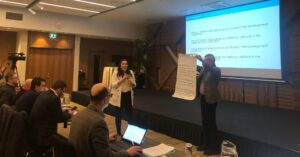
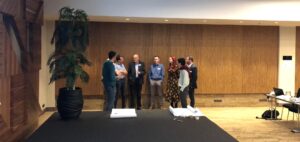

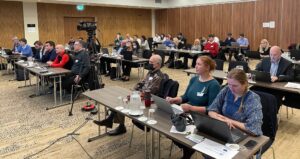
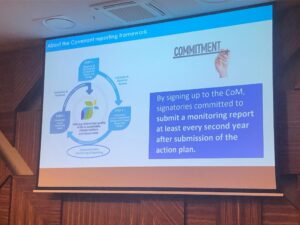
CEESEN Partnership Conference 2022
May 18-19, 2022
@Ptuj, Slovenia
Is your municipality ready to take part in the global fight against climate change and rising energy prices? Are you a municipal employee or NGO engaged in the Clean Energy Transition, or a business looking to make a difference? Are you worried about energy poverty, a just transition, leaving no-one behind? Then join us and learn from experts and pioneer cities, build partnerships and share your results and solutions!
The Central & Eastern European Sustainable Energy Network is committed to support municipalities in the region to adapt to help mitigate the climate crisis and realize a climate-friendly future.
Our conference will gather municipalities, local decision makers, and experts to learn about great ideas, acquire information about possibilities, and build useful connections with one another as well as with actors from the governmental, NGO, and corporate sectors.
We will address those municipalities who are planning to take the first steps and would like to know more about the Covenant of Mayors and the SECAP. The range of our programme’s trainings, lectures, round tables, and workshops will help you to become familiar with the dos and don’ts of developing a climate strategy. Invited speakers from the Covenant of Mayors, DG Climate, and other expert institutions will help to understand the benefits of having a strategic view on climate and energy.
For those who already know what they are aiming for, the most crucial question might well be how to finance the desired action plan. For the more experienced, we offer the options to deep dive into diverse topics - tackling energy poverty, adaptation, establishing energy communities to make the SECAP the core of your sustainability strategy. Learn directly from the most trusted sources: DG Climate, and Climate Alliance among others.
Let’s support each other with sharing experiences and learn from the pioneers! Get involved into the stories of selected forerunner cities in the region, Vienna, Bratislava, Brno, Kaposvár. Located not far from one another, these cities are in four different countries, thus deal with four different sets of national legislative requirements and varying levels of central government support.
Find more information about the topics of CEESEN and collect useful inputs from our blog.
Attending the conference is free, prior registration is required.
REGISTER FOR THE CONFERENCE HERE
Understanding the link between technology and a cleaner world: the twin transition
The importance of using digital technologies to foster a greener economy was clearly highlighted in Article 10 of the 2016 Paris Agreement. “Parties share a long-term vision on the importance of fully realizing technology development and transfer in order to improve resilience to climate change and to reduce greenhouse gas emissions” since “accelerating, encouraging and enabling innovation is critical for an effective, long-term global response to climate change”.[1]
This logic has also increasingly appeared in the documents and speeches emanating from the institutions of the European Union. In fact, the twin digital and green transition has been identified as a priority in the EU’s Green Deal and also plays a central role in its post-Covid recovery approach.[2] It is believed that such a transition, which refers to the transformation towards a greener and a more digital society, will ultimately allow for lasting and prosperous growth.
Key Enabling Technologies (KETs) such as advanced manufacturing, advanced materials, life-science technologies, micro/nano-electronics and photonics, artificial intelligence (AI), and security and connectivity have the potential of rendering industrial processes smarter since they further automate production systems. This increased efficiency is key to developing a circular economy and making our societies more sustainable. [3]
There are practical examples to illustrate the positive effects digital tools can have on the environment: a smart city project in the City of Vienna revealed that a combination of innovative digital solutions and data analytics made it possible to reduce CO2 emissions in a large residential building by 71%, helping the city reduce its environmental footprint.[4] According to some studies, digital technologies have the potential to enable other industries save 20% of global CO2 emissions by 2030.[5]
However, for the twin transition to be completed, new technologies, greater investment and innovation are essential. While new products, services and business models are key to sustaining the EU’s industrial leadership, these should also be climate neutral and circular to ensure that the EU can pursue its environmental goals. Managing this delicate balancing act will ultimately determine whether the EU succeeds in meeting the climate and economic objectives it has set itself.
[1] https://unfccc.int/topics/climate-technology/the-big-picture/what-is-technology-development-and-transfer
[2] https://esignals.fi/en/category-en/r-d/making-sense-of-the-eus-ambitions-green-and-digital-twin-transitions/#8bfc3ce6
[3] Twin Transition through the Implementation of Industry 4.0 Technologies: Desk-Research Analysis and Practical Use Cases in Europe
[4] https://www.digitaleurope.org/resources/digital-action-climate-action-8-ideas-to-accelerate-the-twin-transition/
[5] https://www.digitaleurope.org/resources/digital-action-climate-action-8-ideas-to-accelerate-the-twin-transition/
Development of renewable energy sources in Poland in 2022 - prospects
The past 2021 was very effective in terms of the development of the renewable energy sources in Poland. A great energy transformation is coming, it means giving up from conventional energy sources, which creates opportunities for fast development of renewable energy technologies. However, the last quarter of the year was focused on turbulences on the global energy market and significant increases in the prices of electricity, gas and oil. Therefore, the development of renewable energy sources in Poland must significantly increase in strength to avoid further increases in electricity prices.
The past year was very successful for the development of offshore wind energy in Poland. The first offshore act was created, which gives the opportunity to develop huge investments in the Baltic Sea with a total capacity of 11 GW. They are to contribute to the achievement of the declared climate neutrality by Poland in the future and help reduce the risk of power shortages.
What is more, in past months auctions were held for the sale of electricity from renewable energy sources, including wind energy. Their results showed that wind technology is still one of the most advantageous, with a price of approximately 250 PLN/MWh, compared to the current prices of energy from other sources. The market position of wind energy is also reflected in the large number of bids submitted for other technologies. Due to the good results, the European Commission has agreed to extend the support system for RES energy producers until 2027, which will allow for further auctions in the future and will ensure safe and predictable conditions for the development of the industry.
When it comes to photovoltaics in Poland, despite the slowdown in the micro-installation market, photovoltaics will continue to develop well and in 2022 it may reach 9-10 GW, and by 2030 even 27 GW. The upward trend of the total installed capacity in Poland will be maintained through changes in the structure of newly built photovoltaic systems. PV farms will play an increasingly important role in the Polish photovoltaic mix. According to the forecast, at the turn of 2023-2024, the installed capacity will be equal to the prosumer capacity.
Cover picture source: https://www.ekologia.pl/wiedza/energia-odnawialna/energia-odnawialna-alternatywa-dla-tradycyjnej-energii,11000.html
Green hydrogen from renewable energy sources in Poland
"Green hydrogen from RES in Poland" - the report is the beginning of a discussion on the use of renewable energy sources for the production of hydrogen. For this purpose, a report was prepared by the Polish Wind Energy Association and the Silesian Institute of Energy Studies. It is the first comprehensive study that deals with the subject of green hydrogen. It shows the current state of the hydrogen market and the prospects for its development in the future.
According to the report, the annual demand for hydrogen in Poland in 2040 will be more than 100 TWh. However, plans for the development of renewable sources nowadays do not offer a chance to meet the future supply. It is necessary to eliminate barriers and to facilitate development of renewable energy sources, especially wind energy, which will be the basis for the functioning of the hydrogen economy. The implementation of these aims requires over 60GW of RES generation in 2040.
Poland is currently the third producer of hydrogen in the European Union and the fifth in the world. Thanks to hydrogen, it will be possible to reduce the emission intensity of the Polish economy, increase its competitiveness and it will be possible to build own competences in the field of hydrogen technologies.
Achieving climate neutrality requires the use of hydrogen technology on a large scale. According to the Polish Hydrogen Strategy by 2040 hydrogen will become one of the key energy sources and 2 GW of the installation capacity for hydrogen production from low-emission sources
is expected. To achieve that, access to the appropriate capacity installed in renewable energy sources should be ensured. On the other hand, renewable hydrogen will support the further development of renewable energy, enabling the storage of surplus energy and their subsequent use both in the energy sector and other sectors of the economy. The infrastructure for supplying hydrogen to end users will also be developed and a mechanism to support the production of hydrogen from low-emission sources will be created. Its use in energy, heating, transport and industry will increase. It is also planned that by 2030 there will be 800-1000 hydrogen buses produced in Poland.
Energy poverty in the EU
Energy poverty is defined as the inability to keep one’s home sufficiently powered and at a pleasant temperature throughout the different seasons of the year. As a complex socio-economic problem, it typically affects the most vulnerable members of society, namely low-income families, single-parent households, the elderly and minorities. Furthermore, individuals living in social housing are disproportionately hit by the problem. At present, it is believed that 10% of Europeans cannot afford to adequately heat their homes in winter and 10% cannot properly cool their homes in the summer. [1]
In light of the current corona crisis, which has resulted in higher unemployment rates, concerns about being able to pay one’s energy bills are likely to rise. Moreover, with policy changes at EU level towards low carbon energy, prices are also destined to increase as cheaper and dirtier energy sources are replaced by costlier, cleaner ones. While this will hit countries across the European Union, the former Communist states of Central and Eastern Europe have already witnessed a substantial increase in energy prices due to the phasing out of subsidies and are still at the beginning of the energy transition.
Although the states of Central and Eastern Europe face the greatest difficulties regarding heating, Southern European countries struggle with the inability to ensure adequate cooling in the summer. Still, energy poverty can be observed across the Union regardless of climatic conditions as illustrated in the diagram below. According to the Right to Energy Coalition, almost 80 million people in the EU were late or could not pay their utility bills in 2019.[2]. Moreover, in 2014, the lowest-income households in the EU spent close 9% of their total expenditure on energy – a 50% increase compared to 2004, highlighting that this problem is becoming more widespread over time.[3]
What is the root cause of energy poverty? It is believed that there are three main factors: low-income levels, high energy prices and the low energy efficiency of buildings. Unfortunately, it is also largely recognised that especially those with low-income levels tend to reside in energy inefficient buildings. Due to a lack of funds and disproportionately high costs, these individuals frequently do not heat/cool their homes properly or only keep some of the rooms in their dwellings at a pleasant temperature. Consequently, these households are confronted with greater mental and physical health concerns than the average population.
Differences across the EU in general poverty rates as well as varying home ownership patterns equally make the tackling of energy poverty in a uniform way challenging. While countries such as Germany lead in terms of rental, in Central and Eastern Europe, private ownership continues to be the norm. In multi-owner buildings, the Homeowner Association must jointly agree to renovate for measures to go ahead. In countries where renting is popular, fair mechanisms must be found to share renovation costs between owners, tenants and the state. This bids for flexibility in the approaches adopted for making renovations more popular.
However, it is undeniable that renovations must play a key role in the combat against energy poverty in the EU. This is because existing buildings account for 36% of CO2 emissions in the Union, a number which can be slashed through energy efficiency measures.[4] Properly renovated housing lowers energy consumption, energy costs and greenhouse gas emissions, constituting a win-win situation. As climate change risks provoking more cold snaps and heat waves across the EU, energy demand levels are expected to rise and thus new and innovative schemes for dealing with energy poverty must be explored to meet both the welfare needs of citizens and those of the earth’s climate.
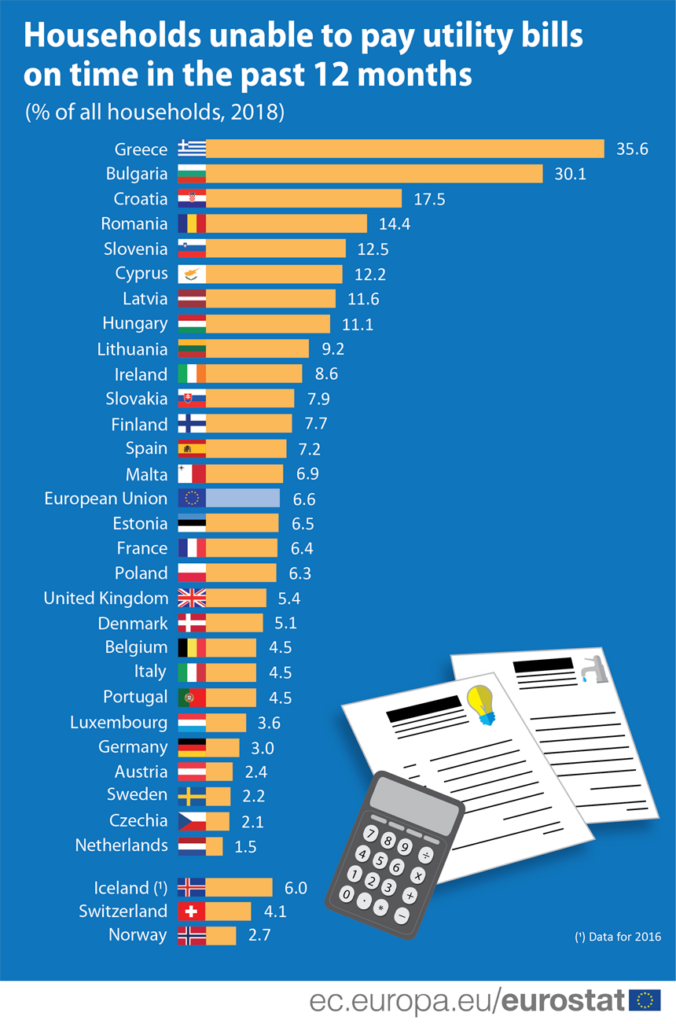
[1] https://righttoenergy.org/about-energy-poverty/
[2] https://righttoenergy.org/about-energy-poverty/
[3] https://www.europarl.europa.eu/RegData/etudes/STUD/2017/596816/IPOL_STU(2017)596816_EN.pdf
[4] https://ec.europa.eu/info/news/focus-energy-efficiency-buildings-2020-feb-17_en
SINCRO.GRID – cross border investment project of European significance
SINCRO.GRID is European project, do-financed by the Connecting Europe Facility of the European Union and is being carried out in the regions of Slovenia and Croatia. The project partners are the Slovenian and Croatian TSOs, ELES and HOPS, and DSOS of both countries, SODO and HEP ODS.
Project is tackling the challenges with overvoltage in transmission systems and established operation terms to enable greater production volumes from RES, an increase in transmission capacity of transmission lines (DTR) and capacity of system service. Project is providing solutions to the lack of flexibility resources needed to regulate the electric system due to increasing integration of decentralised renewable energy sources both in the regions of Slovenia and Croatia.
In Slovenia is planned: installation of a stationary compensation device with an SVC (Static Var Compensation)/STATCOM technology of +/- 150 Mvar at the Beričevo substation, the installation of variable shunt reactor of -150 Mvar at the Cirkovce substation, the installation of variable shunt reactor of -150 Mvar and the installation of a capacitor of +100 Mvar at the Divača substation and two battery storage units with a capacity of 5 MW will be installed at the existing substations of Okroglo and Pekre. At the same time the system for the assessment of power grid operating limits will be implemented, whereby is planned: the installation of hardware and software in control centres and atmospheric measuring instruments on transmission lines. Within the project also the upgrade of the system SUMO (the system for real-time and short-term forecast assessment of power grid operating limits) will take place, which will enable better utilization of existing transmission lines and transformers.
In 2017, the introduction of the virtual cross-border control centre begun, which will enable appropriate data exchange, voltage control and loss optimisation in transmission systems, better control and forecasting of electricity generation from RES, and implementation of tertiary regulation with management of consumption and dispersed generation in Slovenia and Croatia, and participation of RES in the provision of ancillary services.
For more information: https://www.sincrogrid.eu/en/
The benchmarking tool for monitoring, analyzing and reducing energy consumption in buildings
The benchmarking tool “Energiamonitor“ is an application for monitoring, analyzing and reducing energy consumption in buildings. With tool you can easily discover recommendations and tips for reducing energy consumption and saving money by entering just electricity, heating and water heating data of your own building or apartment. In addition to monitoring energy consumption with vivid graphs, the application offers the ability to calculate current energy label of your building (based on Estonian regulations), compare or share the energy consumption of your object(s) with others, and use an in-built solution to seek advice from energy experts up to reaching complete renovation solution in cooperation with energy experts.
Application supports English, Estonian and Russian, so international users can visit site and try with their own building(s) energy consumption. If you do not have your own data immediately available, you can check application with demo buildings integrated into system
If you don't know where you are, you don't know where to go and what you can achieve. Use Energiamonitor and find out!
emonitor.trea.ee
Energiamonitor application was developed with Baltic Smart City Areas for the 21st Century (AREA 21) project under Interreg Baltic Sea Region programme. You can also check AREA 21 guide on Energy Planning and Management Tools.



